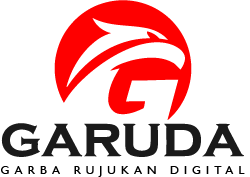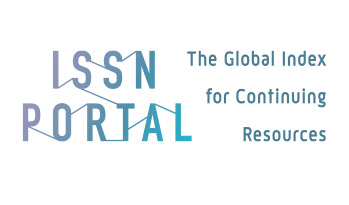HUBUNGAN ASI EKSKLUSIF DENGAN KEJADIAN STUNTING PADA BALITA DI UPTD TELUK SASAH PUSKESMAS TELUK SASAH
DOI:
https://doi.org/10.37776/zkeb.v11i1.697Abstract
In 2016, it is estimated that children under five who experience stunting in the world are 22.9%, but this figure has decreased in 2017 by 22.2%, although the incidence of stunting has decreased, but has not reached the standard set by WHO, namely 20 % (Ministry of Health of the Republic of Indonesia, 2019). The purpose of this study was to determine whether there was a relationship between exclusive breastfeeding and the incidence of stunting in children under five in the UPTD of the Teluk Sasah Health Center in 2020. This study used a cross sectional research design carried out at the UPTD of the Teluk Sasah Health Center. In July 2020. The population was all toddlers aged 24-24. 36 months and a sample of 40 people with the Consecutive Sampling sampling technique. From the results of the study, most of the respondents who gave exclusive breastfeeding with normal nutritional status were 73.7%, only 14.3 experienced stunting and most of the respondents did not give exclusive breastfeeding with experienced stunting there were 85.7%, only 26.3% were normal. The results of the chi-square statistical test obtained a p value of 0.000≤0.05. The conclusion is that there is a relationship between exclusive breastfeeding and the incidence of stunting in toddlers at the Teluk Sasah Health Center UPTD 2020. Mother's advice is to pay attention to and increase children's food needs that contain adequate consumption of nutrients.Downloads
References
Ambarwati, R., Muis, S. F., & Susantini, P. (2012). Konseling Laktasi Intensif dan Pemberian Air Susu Ibu (ASI) Eksklusif Sampai 3 Bulan. MEDIA MEDIKA INDONESIANA.
Ambarwati, W. (2014). Perbandingan Pertumbuhan Bayi yang Diberi ASI Eksklusif dengan PASI Di Kelurahan Kebon Jeruk Jakarta. Cell. https://doi.org/10.1016/j.cell.2009.01.043
Anggraini, D. D. W. I. (2014). Faktor–Faktor Yang Mempengaruhi Ibu Nifas Dalam Mengkonsumsi Vitamin A Di Desa Ngembeh Kecamatan Dlanggu Kabupaten Mojokerto. KTI D3 Kebidanan.
Aries M, Martianto D. (2015). Estimasi kerugian ekonomi akibat gizi buruk dan biaya penanggulangannya pada balita di berbagai provinsi di Indonesia. Di dalam : Jurnal Gizi dan Pangan. Vol 1(2) : 26 -33. Di akses 1 Juni 2015 : http://repository.ipb.ac.id
Bappenas. (2016). SDGs Goal 2.
Cynthia, C., Bikin Suryawan, I. W., & Widiasa, A. (2019). Hubungan ASI eksklusif dengan Kejadian Stunting pada Anak Usia 12-59 bulan di RSUD Wangaya Kota Denpasar. Jurnal Kedokteran Meditek, 25(1), 29-35. https://doi.org/10.36452/jkdoktmeditek.v25i1.1733
Direktorat Jenderal Bina Gizi Masyarakat (2014). Buku Saku Pemantauan Status Gizi dan Indikator Kinerja Gizi Tahun 2014. Jakarta: Kementerian Kesehatan RI;
Djaiman, S. P. H., & Sihadi, S. (2016). Probabilitas Waktu Seorang Ibu Menyusui Pertama Kali Bayinya dan Faktor yang Mempengaruhi. Buletin Penelitian Kesehatan. https://doi.org/10.22435/bpk.v43i4.4599.239-246
Farapti, R. A. D. L. M. (2016). Pemberian Asi Eksklusif Pada Balita Stunting Dan NonStunting. Media Gizi Indonesia.
Fikawati, S., Wahyuni, D., & Syafiq, A. (2012). Gizi Ibu Hamil Pada Kelompok Ibu Vegetarian. Jurnal Gizi Ibu Hamil.
GarcÃa Cruz, L. M., González Azpeitia, G., Reyes Súarez, D., Santana
RodrÃguez, A., Loro Ferrer, J. F., & Serra-Majem, L. (2017). Factors associated with stunting among children aged 0 to 59 months from the central region of Mozambique. Nutrients. https://doi.org/10.3390/nu9050491
Ismail Fahmi. (2013). Penduduk Usia Produktif Indonesia Capai 44,98%.
Kementerian Kesehatan Republik Indonesia. (2017). Buku Saku Pemantauan
Status Gizi Tahun 2017. In Kemenkes RI. https://doi.org/10.3870/tzzz.2010.07.001
Kementerian Kesehatan Republik Indonesia. (2019). Riset Kesehatan Dasar 2018. Kementerian Kesehatan RI. https://doi.org/10.1017/CBO9781107415324.004
Lainua, M.Y.W. (2016). Faktor-faktor yang Mempengaruhi Balita Stunting di Kelurahan Sidorejo Kidul salatiga. Skripsi. Salatiga: Universitas Kristen Satya Wacana Salatiga. Diakses pada tanggal 21 April 2019.
Maria Nova (2018). Hubungan Berat Badan, Asi Eksklusif, Mp-asi dan Asupan Energi dengan Stunting pada Balita Usia 24–59 Bulan di Puskesmas Lubuk Buaya. Jurnal Kesehatan Perintis
MCA Indonesia. (2013). Stunting dan Masa Depan Indonesia. Millennium Challenge Account - Indonesia.
Meilyasari, F. (2014). Faktor risiko kejadian stunting pada balita usia 12 bulan di Desa Purwokerto. Journal of Nutrition College.
Najahah, I. (2014). Faktor Resiko Panjang Bayi Lahir Pendek di Ruang Bersalin RSUD Patut Patuh Patju Kabupaten Lombok Barat. Jurnal Media Bina Ilmiah.
Notoadmojo, S. (2018). Metodelogi Penelitian Kesehaan. Indonesian Jourmal On Medical Science. https://doi.org/S0887899401003605 [pii]
Nurdin AE. (2015) Tumbuh Kembang Perilaku Manusia: Konsep Tumbuh Kembang Perilaku. Jakarta: EGC; 2011. p. 27.
Nursalam. (2017). Metodologi Penelitian Ilmu Keperawatan: Pendekatan Praktis. Metodologi Penelitian Ilmu Keperawatan: Pendekatan Praktis.
Paudel, S., Limbu, N., Pradhan, P., Shrestha, S., Shah, A., Daha, S., & Baral, K. (2017). Nutritional Status of Adolescents in Semi-urban Community in Dukuchhap Village of Lalitpur, Nepal. Birat Journal of Health Sciences. https://doi.org/10.3126/bjhs.v2i1.17286
Prasetyono, Dwi Sunar (2016). Buku Pintar ASI Ekslusif. Pengenalan Praktek Dan Kemanfaatannya. Yogyakarta:Penerbit Diva Press;2016.2
Proverawati, A., & Rahmawati, E. (2017). Kapita Selekta ASI dan Menyusui. Yogyakarta: Nuha Medika. https://doi.org/10.1016/j.aqpro.2013.07.003
Rahmiwati, A. (2016). Hubungan Pengetahuan Ibu Dan Status Gizi pada Anak Usia Bawah Dua Tahun yang Diberi Susu Formula Di Daerah Tanjung
Raja, Kabupaten Ogan Ilir 2015. Skripsi. Fakultas Kesehatan Masyarakat Universitas Sriwijaya
Ridha Mustika Zaif., Merry Wijaya., Dany Hilmanto. (2016) Hubungan antara Riwayat Status Gizi Ibu Masa Kehamilan dengan Pertumbuhan Anak Balita di Kecamatan Soreang Kabupaten Bandung. Skripsi
Roesli, Utami. (2014). Mengenal ASI Eksklusif. Jakarta: Niaga Swadaya.
Ruchayati, F., Nurani, D., Keintjem, F., Losu, F. N., Julianti, Ika Yulia Pratiwi, … Bahar, B. (2013). Gizi dan Penyembuhan Luka. In Indonesia Academic Publishing.
Sari, L. P., Mufnaetty, & Sartono., A. (2016). Hubungan Daya Terima Makanan Dengan Status Gizi Anak Di Panti Asuhan Darunajah Semarang. Jurnal Gizi.
Schröders, J., Wall, S., Kusnanto, H., & Ng, N. (2015). Millennium development goal four and child health inequities in Indonesia:A systematic review of the literature. PLoS ONE. https://doi.org/10.1371/journal.pone.0123629
Sugihantono, A. (2015). Rencana Strategis Program Direktorat Jenderal Bina Gizi dan KIA. In Rencana Strategis Program Direktorat Jenderal Bina Gizi Dan Kia.
Sugiyono. (2016). Metode Penelitian Kuantitatif, Kualitatif dan Kombinasi (Mixed Methods). Bandung: Alfabeta. https://doi.org/Doi 10.1016/J.Datak.2004.11.010
Sukarini, L. P. (2015). Pengetahuan Dan Sikap Ibu Dengan Pemberian Asi Eksklusif. Jurnal Genta Kebidanan. https://doi.org/10.36049/jgk.v5i2.58
UNICEF. (2013). Improving child nutrition: The achievable imperative for global progress. In Division of Communication, UNICEF. https://doi.org/978-92-806-4686-3
Wati, E. K., Proverawati, A., Purnamasari, D. U., & Rahardjo, S. (2015). Tingkat Asupan Zat Gizi dan Status Gizi Penderita Thalassemia di Kabupaten Banyumas. Jurnal Kesmasindo.
Wellina, W. F., Kartasurya, M. I., & Rahfiludin, M. Z. (2017). Faktor risiko stunting pada anak umur 12-24 bulan. Jurnal Gizi Indonesia. https://doi.org/10.14710/jgi.5.1.55-61
World Bank Institute. (2018). Introduction to Poverty Analysis: Poverty Manual. World Bank Institute
Yongky. (2012). Analisis Pertambahan Berat Badan Ibu Hamil Berdasarkan Status Sosial Ekonomi Dan Status Gizi Serta Hubungannya Dengan Berat Bayi Baru Lahir. Disertasi, Gizi Masyarakat-IPB. Bogor. http://repository.ipb.ac.id/handle/123456789/40922 [diakses pada tanggal 28 Mei 2016]
















